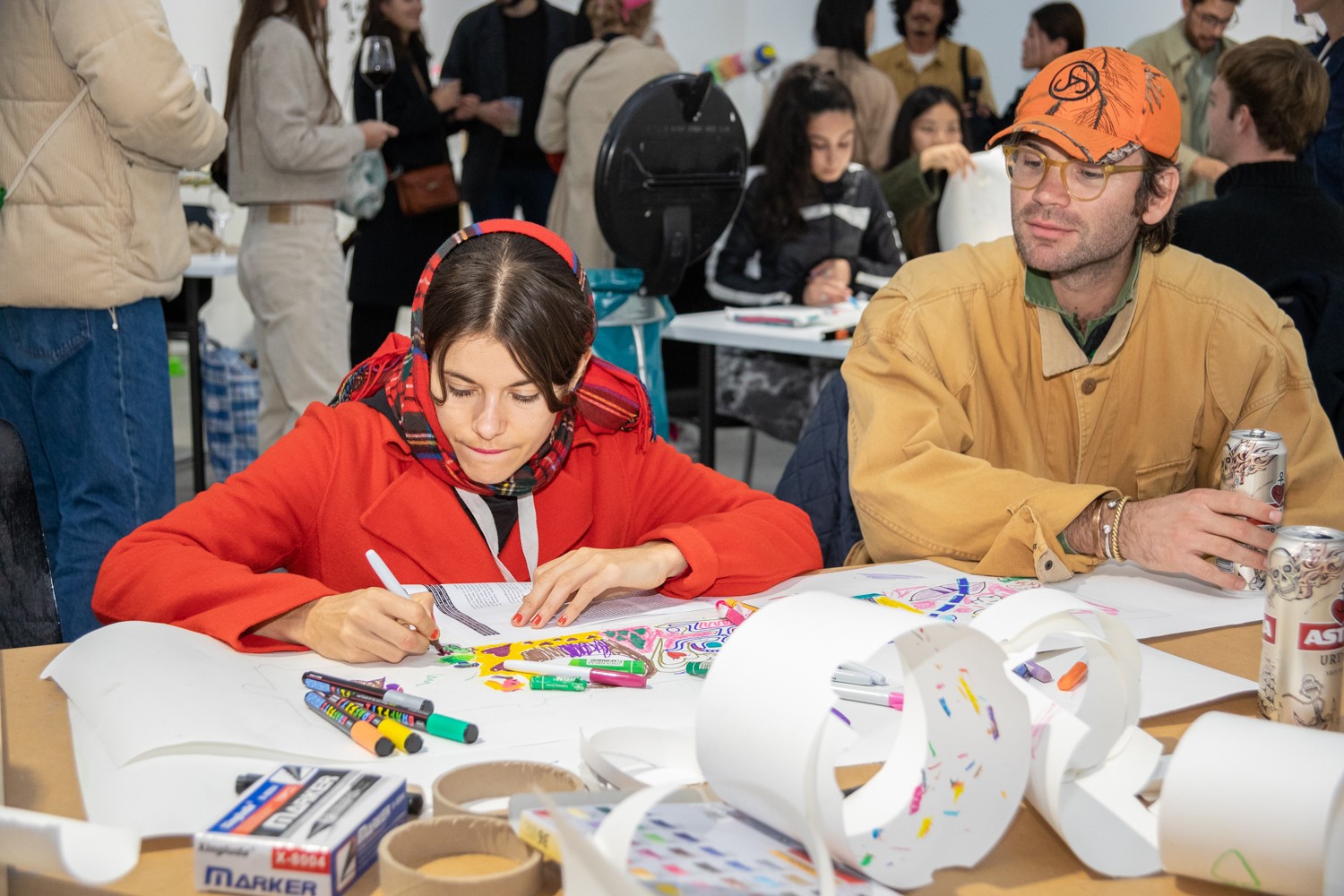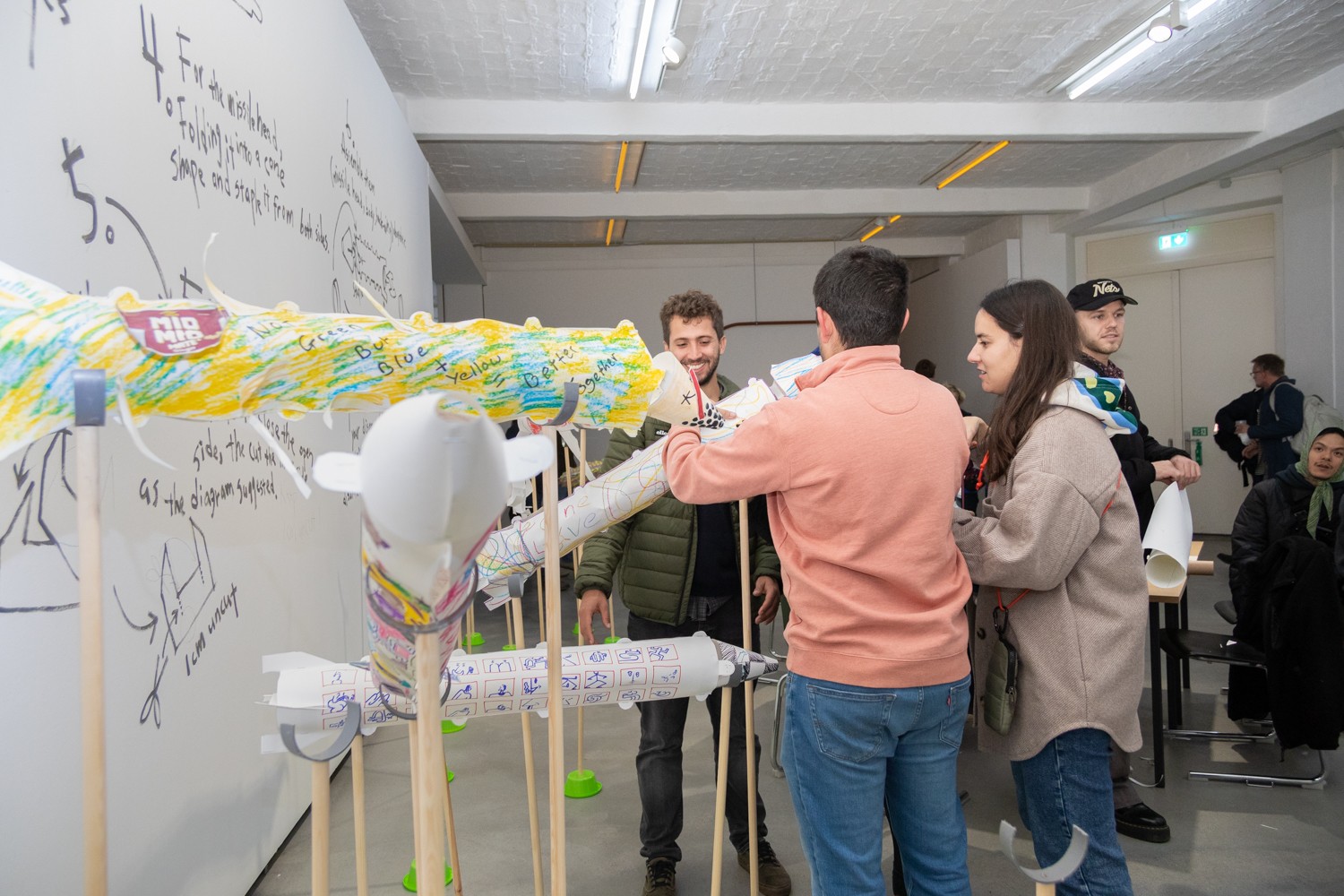Artists
Photo Credit: NIU Chun-Chiang
Hsiung Yuan-pei
Hsiung Yuan-pei
| Location | Germany / Berlin |
|---|---|
| Residency | Künstlerhaus Bethanien |
| Year of the Grant | 2022 |
| Work | The Missile Factory |
Artist Statement:
During my residency at Künstlerhaus Bethanien, I observed and documented people’s views on why Germany, particularly Berlin—a capital steeped in politics yet filled with leftist ideals and freedom—maintains such close ties with China. At first, things didn't go smoothly. First, few were willing to explore another heavy, somber topic aside from the ongoing Ukraine-Russia conflict. Second, art as intervention functions as a mechanism, but within the white walls of art galleries, audiences are accustomed to passive observation rather than active participation for long. Luckily, after attending the 15th Kassel Documenta (Note 1), things took a turn. I finally found a way to implement this social sculpture (Note 2) and hoped to break down the artistic authority of Künstlerhaus Bethanien, encouraging Berliners to participate in the creative process.
Taking advantage of Germany’s 9-euro summer regional train pass, I traveled from Kassel all the way northeast. On this 7-hour slow train, I thought about how this year’s Documenta was truly worth seeing. The exhibition unfolded like a web of anarchism, evoking the free-spirited atmosphere of the 1970s, but now confronting a world deeply globalized and scarred by neoliberalism in a post-capitalist society. The islanders, on the brink of drowning due to global warming, cry out as the "others" exploited by capitalism. They are survivors of gender oppression struggling to find light. They are the indigenous peoples trapped in an unending cycle of colonialism, and Haiti artists gathering discarded capitalist waste from Western shores, consciously airlifting it here to you as an act of participatory resistance in a white-dominated world.
I felt deeply encouraged. I had thought social sculpture appealed only to a small niche in the art world. However, at this exhibition, I witnessed art evolving, gradually embodying a sense of responsibility and attitude. In mid-August, when U.S. Speaker of the House of Representatives Nancy Pelosi visited Taiwan, China decided to conduct missile tests aimed at Taiwan again since 1995. This prompted me to shift my exhibition theme to "The Missile Factory," hoping to introduce Berliners to the stark reality across the Taiwan Strait, despite it was so far from their world. I created models of Dongfeng missiles and invited visitors to craft paper missiles. Drawing inspiration from Berliners’ historical responses to the Berlin Wall, we used graffiti, letters, and words to soften the highly political nature of these paper missiles.
The Missile Factory is a creative response to Beijing’s missile tests through "co-production." Using China’s Dongfeng missiles as prototypes, I invited viewers to make paper missiles with molds. This project combines Berliners’ defiance in the Berlin Wall era with graffiti, writing, and humor to diffuse the highly political missile provocations. I aimed to make the "process of participation" a means of continuous communication and exchange between subjects and objects. When I launched the exhibition, most of the displays were empty because the act of participation itself was my work. As paper missiles were created one after another by people I know and those I don’t, I realized that my creative medium is "people. " Art with a social purpose is the path I wish to pursue. Engaging with the public outside art museums is an unavoidable step for me.
Note 1: This year’s documenta was curated by an Indonesian artistic team, which introduced the concept of "warehouse" as a space of gathering / sharing/ co-prosperity / decentralization.
Note 2: Joseph Beuys proposed the idea of "social sculpture," stressing that society itself is the greatest work of art and that artists must strive to influence social change.
Author: Hsiung Yuan-pei
Edited: Brix




